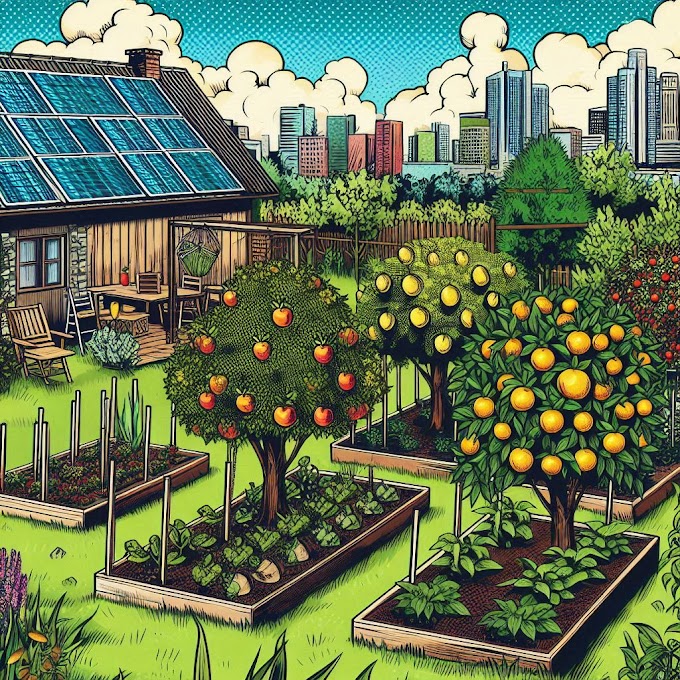Corn: A Staple Crop for Your Garden
Corn, also known as maize, is a versatile and nutritious staple crop that has been cultivated for thousands of years. Whether enjoyed fresh off the cob, grilled to perfection, or ground into flour for baking, corn offers a multitude of culinary possibilities.
Here's everything you need to know about growing and enjoying corn in your garden:
Health Benefits:
1. Nutrient-Rich: Corn is a good source of essential nutrients, including carbohydrates, fiber, vitamins, and minerals. It provides energy for the body, supports digestion, and promotes overall wellbeing.
2. Antioxidant Properties: Corn contains antioxidants like lutein and zeaxanthin, which help protect against age-related macular degeneration and maintain eye health. These compounds also have anti-inflammatory properties and contribute to skin health.
3. Heart Health: The fiber content in corn helps lower cholesterol levels, regulate blood sugar levels, and promote cardiovascular health. Including corn in your diet may reduce the risk of heart disease and stroke.
4. Digestive Health: The insoluble fiber in corn promotes regular bowel movements and prevents constipation. It also feeds beneficial bacteria in the gut, supporting a healthy digestive system.
5. Weight Management: Corn is relatively low in calories and fat, making it a suitable option for those watching their weight. Its high fiber content helps promote feelings of fullness and satiety, reducing overall calorie intake.
Culinary Uses:
1. Fresh and Sweet: Enjoy corn fresh off the cob for a sweet and crunchy snack. Simply boil or steam the corn until tender, then season with butter, salt, and pepper for a classic treat.
2. Grilled Corn: Grilling corn adds a delicious smoky flavor and caramelizes the natural sugars in the kernels. Remove the husks and silk, brush the corn with olive oil or butter, and grill over medium heat until lightly charred. Serve with lime wedges and your favorite seasonings for added flavor.
3. Corn Salad: Combine fresh corn kernels with diced tomatoes, cucumbers, bell peppers, red onions, and herbs to make a colorful and refreshing salad. Dress with a simple vinaigrette or creamy dressing for added flavor.
4. Cornbread: Use cornmeal to make homemade cornbread, a classic Southern staple that pairs well with chili, soups, and stews. Add corn kernels or jalapenos for extra texture and flavor.
5. Corn Chowder: Whip up a hearty corn chowder using fresh or frozen corn kernels, potatoes, onions, celery, and broth. Simmer until the vegetables are tender, then stir in milk or cream for a creamy and comforting soup.
Growing Tips:
1. Climate and Soil: Corn thrives in warm climates with plenty of sunlight and well-drained soil. Choose a sunny location in your garden with fertile, loamy soil that retains moisture but drains well.
2. Planting: Plant corn seeds directly in the garden once the soil has warmed up in spring, usually after the last frost date. Sow seeds in rows or blocks, spacing them 8-12 inches apart and planting them 1-2 inches deep.
3. Watering: Keep the soil consistently moist but not waterlogged, especially during the early stages of growth and when the plants are forming ears. Water deeply and regularly, providing at least 1 inch of water per week, more during hot and dry periods.
4. Fertilizing: Apply a balanced fertilizer or compost to the soil before planting to provide essential nutrients for healthy corn growth. Side-dress with additional fertilizer when the plants are knee-high and again when they begin to tassel.
5. Pollination: Corn plants are wind-pollinated, so it's essential to plant them in blocks or multiple rows to ensure good pollination and proper ear development. Shake the tassels gently when they release pollen to aid in pollination.
Harvesting and Storage:
1. Harvesting: Corn is ready for harvest when the kernels are plump, full, and milky when pierced with a fingernail. The husks will also begin to dry and turn brown. To harvest, grasp the ears firmly and twist them downward until they snap off the stalk.
2. Storage: For the best flavor and sweetness, consume corn as soon as possible after harvest. If you have more corn than you can eat fresh, blanch and freeze the kernels for long-term storage. Alternatively, can or pickle corn for extended shelf life.
By growing corn in your garden, you can enjoy the delicious taste and nutritional benefits of this versatile crop all season long. Whether enjoyed fresh, grilled, or incorporated into your favorite recipes, corn is sure to delight your taste buds and provide nourishment for you and your family.












